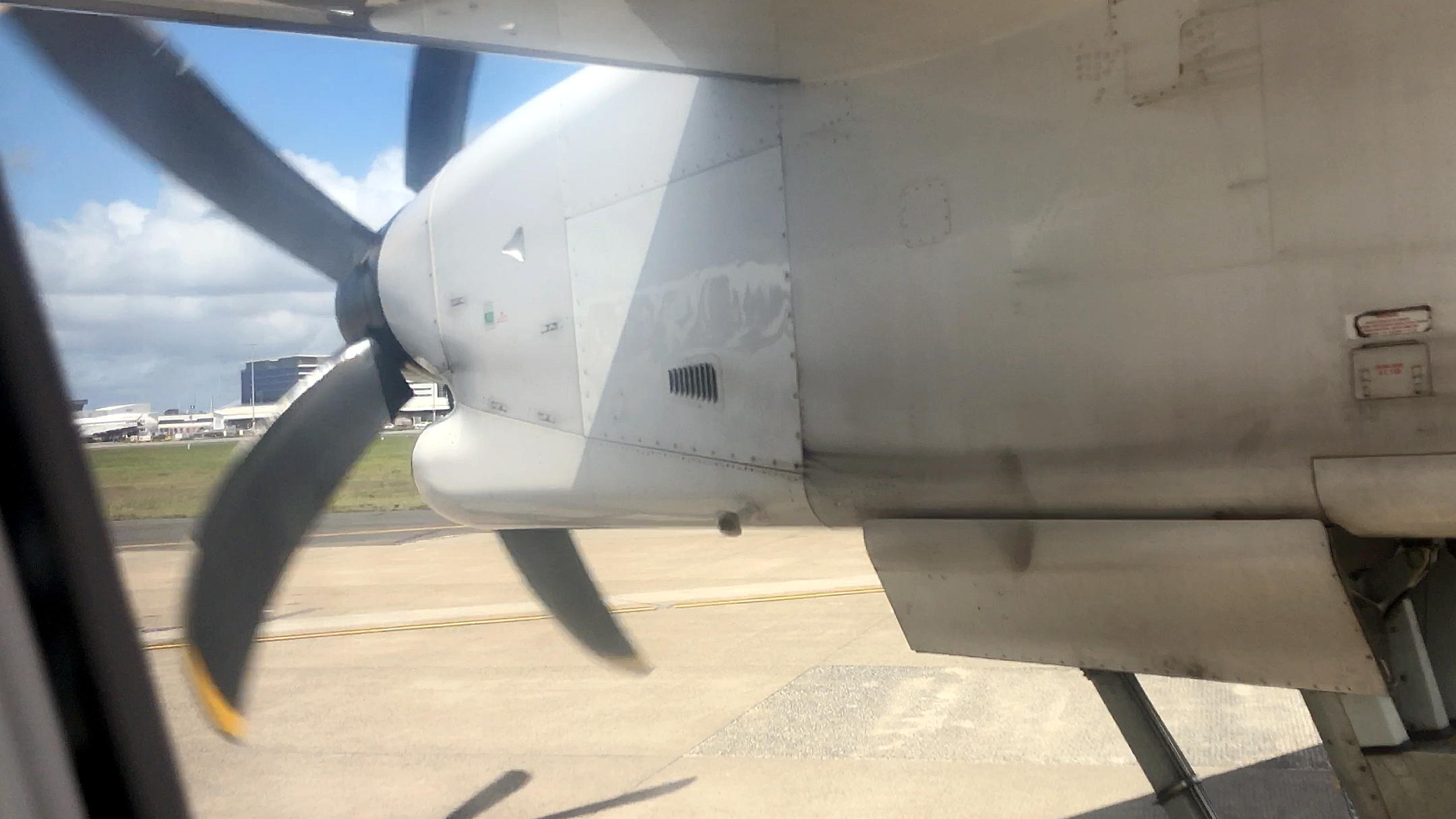
|
Key points:
|
Confusing and ambiguous procedures probably led to maintenance personnel releasing to service a DHC-8 (Dash 8) aircraft which subsequently experienced an uncommanded in-flight engine shut down after metal debris had been detected on the engine’s chip detector, a new ATSB report details.
The QantasLink-operated DHC-8-400’s right engine, a Pratt & Whitney Canada PW150A, shut down uncommanded as the aircraft approached the top of the descent north of Brisbane Airport when operating a scheduled passenger flight from Mackay on 26 June 2018. The crew actioned the engine shutdown checklist but the propeller did not feather and continued to rotate at low speed in a coarse pitch position. The crew actioned the ‘Non-Normal’ checklist and continued to Brisbane for a safe landing.
“Examination of the affected engine at Pratt & Whitney’s facility in Canada found that the uncommanded shutdown occurred as a result of a bearing fracture in the tower shaft for the accessory gearbox that runs the main engine oil pump and fuel-metering unit,” ATSB Director Transport Safety Mr Stuart Macleod said.
However, consistent with previous similar occurrences, due to the extent of the damage it was not possible to establish the cause of the bearing fracture, the ATSB investigation notes.
Mr Macleod said the investigation found that maintainers missed an opportunity to ground the aircraft when, on the day before the flight, metal debris was detected on the engine’s chip detector.
“Procedures in the aircraft maintenance manual were confusing and ambiguous and this probably led to a misunderstanding which allowed the aircraft to be released to service.”
The investigation found that following the detection of debris on the chip detector and the oil filter, maintenance personnel discussed a previous detection of debris but incorrectly concluded that it did not need to be considered. This resulted in the aircraft being released to service with a 20 flight-hour limitation.
In response to the incident Pratt & Whitney Canada have standardised the wording relating to debris analysis guidance in the aircraft maintenance manual.
“The ATSB acknowledges the improvement this will make, but still considers there is ambiguity and the potential for confusion in the procedure and has asked Pratt & Whitney to take further action to improve the clarity of the chip detector debris analysis section of the manual,” Mr Macleod said.
In addition, QantasLink have introduced a system to monitor metallic debris found on chip detectors to assist in trend identification, and have issued an airworthiness standing order to all certifiers within the approved maintenance organisation to introduce a single certification statement standard for all maintenance.
“Clear and unambiguous procedures are very important to avoid misinterpretation and error when performing safety‑critical tasks like aircraft maintenance,” Mr Macleod said.
“This occurrence also illustrates that the high reliability of modern aircraft maintenance depends on accurate record keeping of all performed tasks to both communicate what has been done and assist in trend identification.”
QantasLink have also issued a technical advisory bulletin to DHC-8-400 pilots advising them of the incident and warning that propellers may not always feather as practiced in the simulator.
Despite detailed technical examination, the reason the propeller did not feather could not be established.
However, the propeller did go to a ‘safe coarse’ condition due to the counterweights in the propeller system, as it would if there was no oil in the propeller system, and QantasLink identified that the one engine inoperative performance reduction between a counter‑weight coarsened propeller and a fully feathered propeller was only 0.5–0.9 per cent.
Read the final report: Uncommanded engine shutdown involving De Havilland Aircraft of Canada DHC-8, VH-LQD, 77 km north-north-west of Brisbane Airport, Queensland, on 26 June 2018


